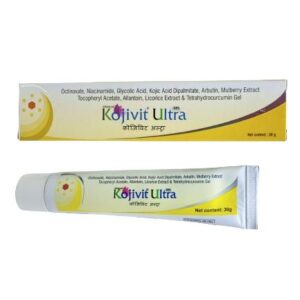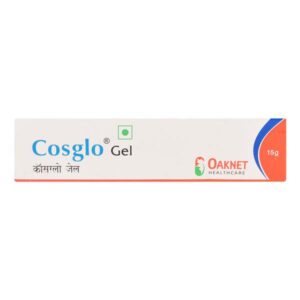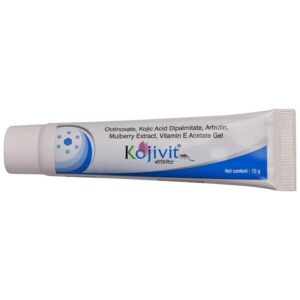VIT C + LACTIC ACID + KOJIC ACID + ARBUTIN + CREAM BASE
Vit C: Drug name: Vitamin C (Ascorbic Acid)
Use: Vitamin C is a nutritional supplement and an essential vitamin for the body. It is used to prevent or treat vitamin C deficiency, which can cause scurvy. It is also used as an antioxidant to protect cells from damage and boost the immune system.
Mechanism of Action: Vitamin C acts as a co-factor in several enzymatic reactions within the body. It is involved in the synthesis of collagen, a protein important for wound healing and the maintenance of healthy connective tissues. Vitamin C also enhances the absorption of iron from plant-based sources and helps in the production of neurotransmitters. Additionally, it acts as an antioxidant, neutralizing harmful free radicals and reducing oxidative stress in the body.
Dose: The recommended daily dose of vitamin C varies based on age, sex, and specific health conditions. For adults, the recommended daily allowance ranges from 75-90 mg per day for women, and 90-120 mg per day for men. The maximum recommended daily dose is 2,000 mg for adults.
Side Effects: Vitamin C is generally considered safe and well-tolerated when taken in recommended doses. However, high doses of vitamin C can cause gastrointestinal side effects such as diarrhea, nausea, and stomach cramps. Individuals with pre-existing kidney conditions or a history of kidney stones should exercise caution when taking high doses of vitamin C. In rare cases, allergic reactions to vitamin C supplements may occur, presenting as rash, itching, or difficulty breathing. If any adverse reactions are experienced, it is recommended to discontinue use and consult a healthcare professional.
Lactic Acid: Lactic acid, also known as lactate, is a chemical compound that plays a crucial role in various metabolic processes in the body. In drug form, lactic acid can be used for several purposes, including topical application for skincare and as a component in dialysis solutions.
In skincare, lactic acid is often used as an exfoliant to help remove dead skin cells and improve skin texture. It belongs to a group of chemicals called alpha hydroxy acids (AHAs). AHAs work by loosening the bonds between the outermost layer of skin cells, promoting their shedding and revealing new, healthier skin.
For dialysis patients, lactic acid is used as an electrolyte-balancing component in dialysis solutions. It helps to correct metabolic acidosis, a condition characterized by an imbalance in the body’s acid-base levels, commonly seen in patients with kidney failure.
The dosage of lactic acid varies depending on the specific form and intended use. For skincare products, the concentration of lactic acid typically ranges from 5% to 10%, and the frequency of application may also vary based on individual needs and tolerance.
As for side effects, topical application of skincare products containing lactic acid can lead to mild irritation, redness, and stinging sensation, particularly in individuals with sensitive skin. It is recommended to perform a patch test on a small area of skin before using lactic acid products on larger areas to assess tolerance. In rare cases, allergic reactions such as itching and hives may occur.
When used in dialysis solutions, lactic acid is generally well-tolerated. However, some patients may experience side effects such as hypotension (low blood pressure), metabolic alkalosis (excess alkalinity of body fluids), and electrolyte imbalances. These effects are closely monitored by healthcare professionals during dialysis treatments.
It is important to note that lactic acid should only be used as directed and under the guidance of a healthcare professional or as indicated on the product label.
Kojic Acid: Kojic acid is a naturally occurring substance that is commonly used in skincare products and treatments. It is derived from various fungi species, particularly Aspergillus oryzae, and is known for its skin-lightening and anti-aging properties.
The primary use of Kojic acid is as a skin lightening agent. It is often used to treat hyperpigmentation, such as sunspots, melasma, and acne scars. It works by inhibiting the production of melanin, the pigment responsible for skin coloration. By reducing the amount of melanin produced, Kojic acid can help lighten dark spots and promote a more even skin tone.
Kojic acid is available in various formulations, including creams, serums, soaps, and lotions. The concentration of Kojic acid in these products can vary, and it is essential to follow the instructions provided by the manufacturer or healthcare professional.
The typical dose of Kojic acid depends on the product and its concentration. It is recommended to start with a lower concentration and gradually increase as tolerated. Generally, a concentration of 1-4% is considered safe and effective. However, higher concentrations may be prescribed by a dermatologist for more severe cases of hyperpigmentation.
While Kojic acid is generally considered safe for most people, it is important to be aware of potential side effects. Some common side effects include skin irritation, redness, itching, and dryness. These side effects are usually mild and temporary, but if they persist or worsen, it is advisable to discontinue use and consult a healthcare professional.
Individuals with sensitive skin or a history of allergies should exercise caution when using Kojic acid products, as they may be more prone to experiencing adverse reactions. Additionally, Kojic acid may increase the skin’s sensitivity to the sun, so it is important to use sunscreen and limit sun exposure while using this product.
In summary, Kojic acid is a skin-lightening agent commonly used to treat hyperpigmentation. It works by inhibiting melanin production in the skin, resulting in a more even skin tone. It is available in various formulations and concentrations, and its use should be in accordance with the instructions provided. While generally safe, there is a possibility of mild skin irritation or sensitization, and it is important to discontinue use if any adverse reactions occur.
Arbutin: Arbutin is a natural compound found in various plants, such as bearberry, pear, and cranberry. It is commonly used in skincare products for its skin-lightening and depigmenting effects. Arbutin works by inhibiting the activity of tyrosinase, an enzyme involved in the production of melanin (the pigment responsible for skin color). By reducing melanin synthesis, arbutin helps to lighten dark spots, hyperpigmentation, and age spots, resulting in a more even skin tone.
Arbutin can be applied topically as a cream or lotion. The recommended dose varies depending on the product, and it is advisable to follow the instructions provided by the manufacturer. Generally, it is applied twice a day to the affected areas of the skin.
When used as directed, arbutin is generally safe and well-tolerated. However, some individuals may experience mild side effects, including skin irritation, redness, itching, or a burning sensation at the application site. These side effects are usually temporary and resolve on their own. If any severe or persistent side effects occur, it is important to discontinue use and consult a healthcare professional.
It is worth noting that arbutin may not be suitable for everyone, particularly individuals with hypersensitivity or allergies to any of its components. To ensure safety, it is recommended to conduct a patch test before using arbutin products extensively.
Overall, arbutin is a popular ingredient in skincare products due to its ability to effectively reduce skin discoloration and promote a more radiant complexion. However, it is important to consult a dermatologist or healthcare professional before starting any new skincare regimen to determine the most appropriate treatment plan for individual needs.
Cream Base: Cream Base is not a specific drug, but rather a pharmaceutical term referring to the carrier or vehicle used to deliver medication to the skin. It is essentially a vehicle or base for incorporating active ingredients into a cream formulation.
Use:
Cream Base is used as a base or carrier for various topical medications. It is typically mixed with active pharmaceutical ingredients to create creams, ointments, or lotions that can be applied to the skin for local treatment of various conditions such as skin infections, inflammation, allergies, or dermatological disorders.
Mechanism of Action:
Cream Base itself does not have a specific mechanism of action as it is not a medication but a base for medication. The mechanism of action depends on the active pharmaceutical ingredient incorporated into the Cream Base, as it is the active ingredient that provides the therapeutic effect.
Dose:
The dose of Cream Base would depend on the specific medication being formulated. The ratio of active pharmaceutical ingredient to Cream Base, as well as the recommended amount of cream to be applied, would be determined by healthcare professionals and specified in the medication’s prescribing information.
Side Effects:
Since Cream Base is not a medication itself, it does not have any specific side effects. However, if allergic reactions or irritations occur after using a cream or medication formulated with Cream Base, it is possible that it could be due to the active ingredient rather than the base itself. In such cases, it is important to consult a healthcare professional for further evaluation and guidance.



